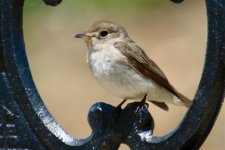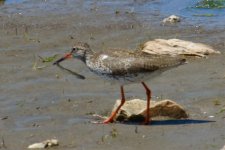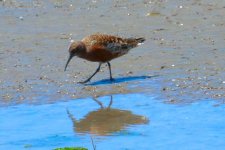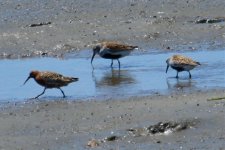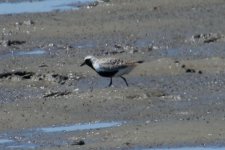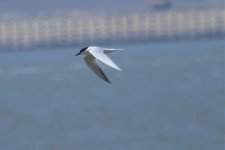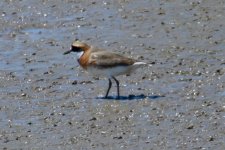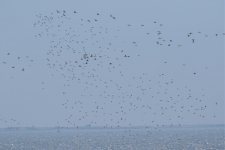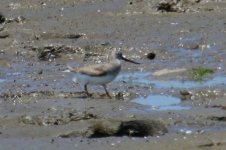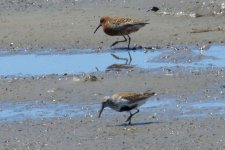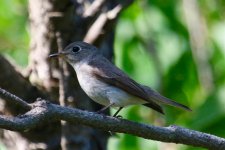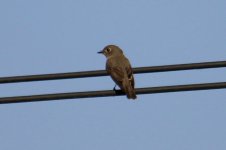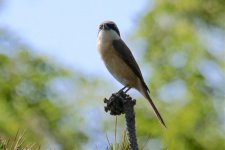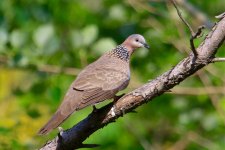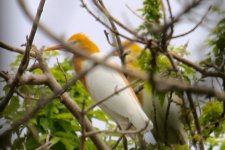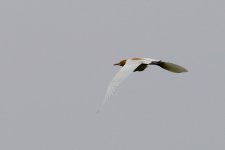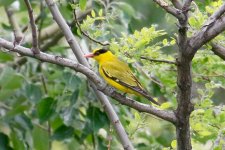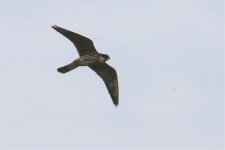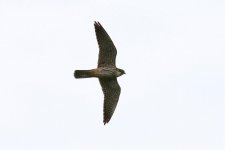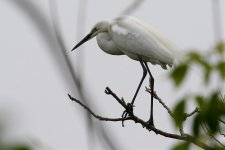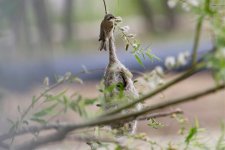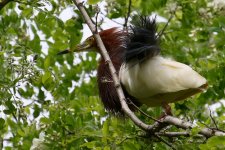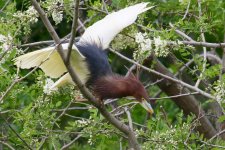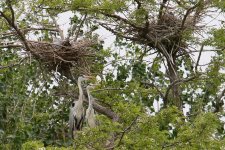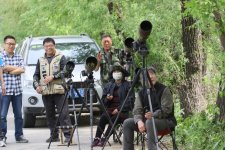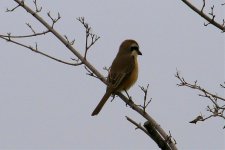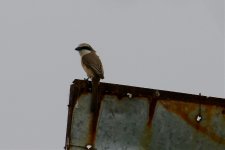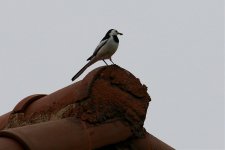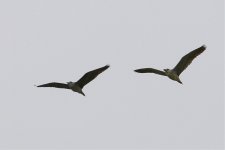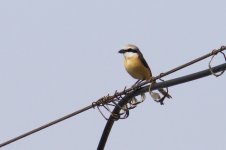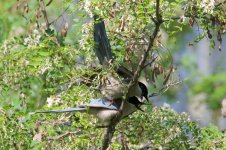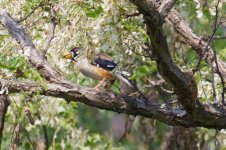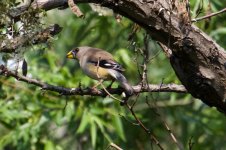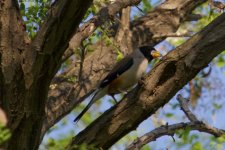May 24, 2016
Made another trip along the ZhongGen Canal which was the hotspot a week ago or so. Not a lot going on this time. Mostly
Brown Shrike but did find what I believe were
(2) Bull-Headed Shrike. A stockier build with thicker neck and the eye stripe was wider especially on each end. Unfortunately, I never did get a good look at the flanks for the white patch. See what you think. The rice paddies were all flooded and planting underway and
one Chinese Pond Heron was observed checking out the paddy fields.
I had couple of probables, but just too quick of a look to be certain and no photos. An individual broke cover from the tree right next to me at head level and shot across a rice paddy to a line of trees on the other side. I saw enough to know it was a new species to me and got an impression of Starling like dark colored with widespread white spotting and white vent. Looking at the Brazil's when I got home, it sure seemed to be a Spotted Nutcracker. Mixed woodland, but I haven't seen any nut producing trees in this area in general. Probably just migrating through. The second I would say maybe 90% certain as there is little that would look like it or fly like it. I had a large black and white bird with large bill break cover well ahead of me and again fly over the paddy. I pulled up the camera and tried to catch it but just ended up losing sight of it entirely. Never did reacquire it. The flight and general outline looked very much like a Kingfisher so I am guessing a Crested Kingfisher. Wish I had gotten a photo as it was impressive since I am used to the half it's size Common Kingfisher.
The family had forgotten to mention that the intern TV reporter that had accompanied the print reporter the other day managed to get his piece about my birding on Panjin TV the other day. None of us actually saw it, but not knowing about it I was rather puzzled to have people on three different occasions actually calling out to me, "Owen! Owen!" and wanting to look at what I had on the camera, which unfortunately at the time was not much. Seemed a little freaky at the time. How did they know my name?
Panjin, Dawa County, Liaoning, CN, Liaoning, CN
May 24, 2016 1:30 PM - 2:45 PM
Protocol: Traveling
2.0 kilometer(s)
7 species
Chinese Pond-Heron (Ardeola bacchus) 1
Bull-headed Shrike (Lanius bucephalus) 2
Brown Shrike (Lanius cristatus) 5
Barn Swallow (Hirundo rustica) 20
Asian Brown Flycatcher (Muscicapa latirostris) 2
Gray-backed Thrush (Turdus hortulorum) 1
Eurasian Tree Sparrow (Passer montanus) 10
View this checklist online at
http://ebird.org/ebird/view/checklist?subID=S29874732
This report was generated automatically by eBird v3 (
http://ebird.org)
Deciding it was just not the day for it, I hopped the bus and went back towards home to check out the canal to the north in towards the city center. Turns out that it was a slightly better choice as there was at least some entertainment in the antics of some
Azure-Winged Magpie & Chinese Grosbeak. The AWM generally are quite boisterous but the CG that I had seen in the past were always quite calm and quiet. Yesterday they were in the middle of courtship with the males calling and chasing each other in a large locust tree with great vigor and the females choosing mates.
While watching all this activity, I picked up a hanger-on in the form of a young man who was very interested and obviously delighted once he saw what I was looking at. He followed me around the rest of the way pointing out everything he saw including a small snake. He about came unglued when I promptly walked right up to it to get a better look. Looked much like a garter snake, don't know what the species would be here.
I had for the last week been seeing flashes of a dark blue and finally got a better, though quick look at one. Dark blue, almost midnight blue bird with a prominent white eyebrow stripe. As I lowered the bins it moved deeper into the bush and out of sight. Waiting a few minutes I caught a brief look at the original bird accompanied with an equal size and shape brown individual with distinct scaled breast. Initial thought was too different Thrush, but now think I was seeing male and female Siberian Thrush.
Panjin, Dawa County, Liaoning, CN, Liaoning, CN
May 24, 2016 3:00 PM - 4:15 PM
Protocol: Traveling
2.0 kilometer(s)
7 species
Azure-winged Magpie (Cyanopica cyanus) 8
Barn Swallow (Hirundo rustica) 10
Japanese Tit (Parus minor) 1
Arctic Warbler (Phylloscopus borealis) 6
Siberian Thrush (Geokichla sibirica) 2
Yellow-billed Grosbeak (Eophona migratoria) 15
Eurasian Tree Sparrow (Passer montanus) 10
View this checklist online at
http://ebird.org/ebird/view/checklist?subID=S29874808
This report was generated automatically by eBird v3 (
http://ebird.org)





